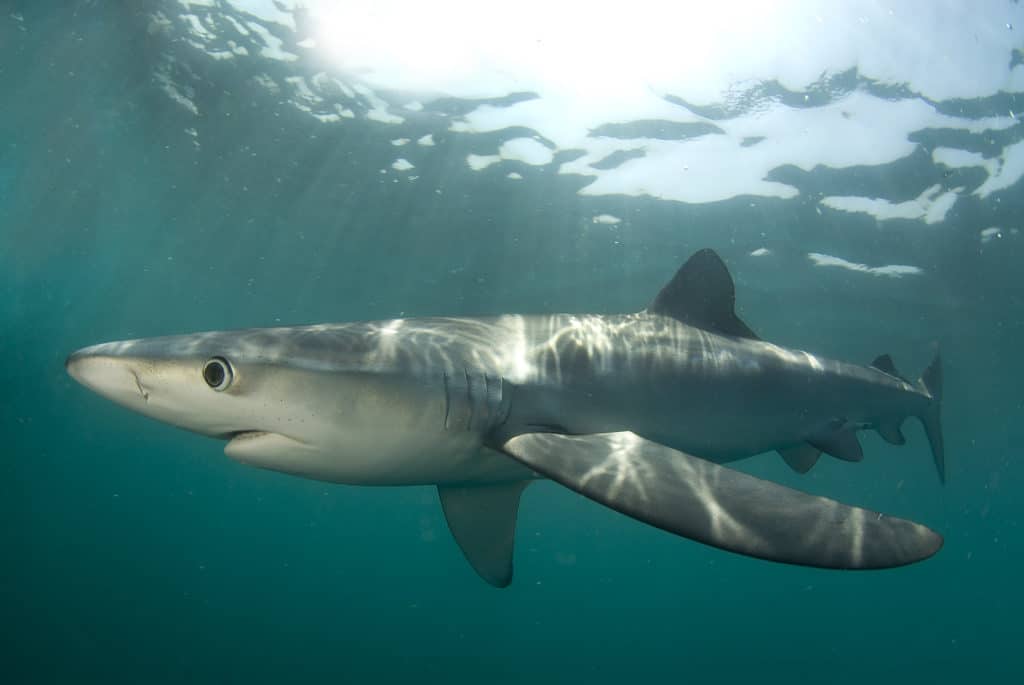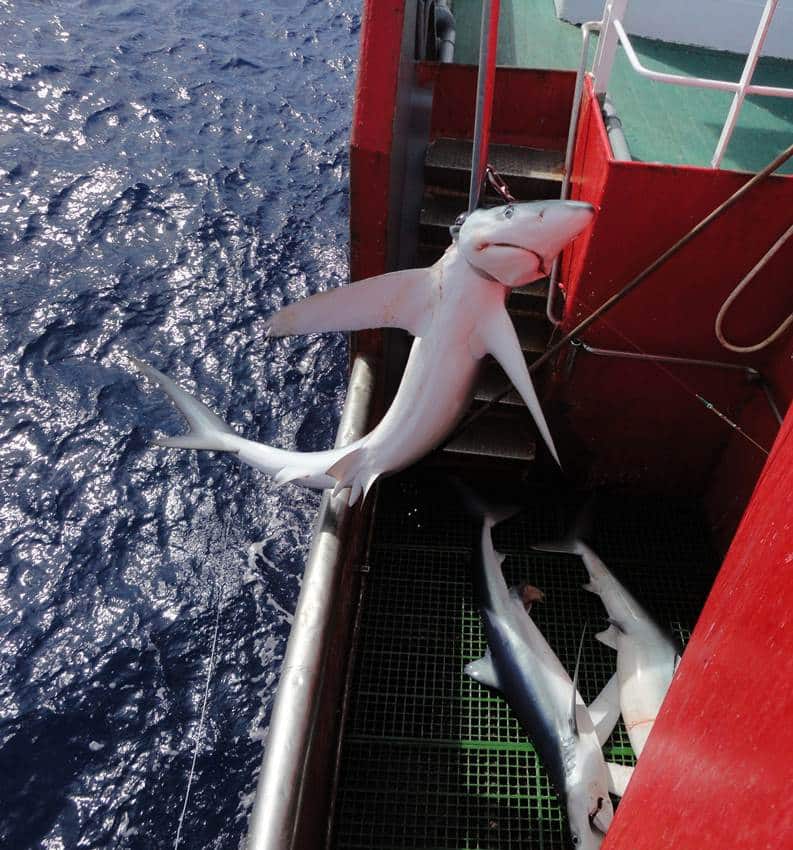Macquarie University’s Professor Rob Harcourt urges Oceania-wide action to safeguard several species.
Sharks in Australian waters are well protected but are at risk as soon as they leave them, a new international study reveals.

The study compiled by 150 scientists around the world – including 26 with ties to Australia – has found that even in the most remote parts of the world’s oceans migratory sharks are in severe danger from commercial fishing fleets, new research reveals.
In a paper published in the journal Nature, more than 150 scientists, including Professor Rob Harcourt from the Department of Biological Sciences at Australia’s Macquarie University, report that the sharks – which include iconic species such as the shortfin mako (Isurus oxyrinchus) and the great white (Carcharodon carcharias) – congregate in food-rich areas that are also prime hunting grounds for commercial longline fishing fleets.
The result, says Professor Harcourt, is that Australia’s attempts to protect the sharks fail to do so – and that wider international engagement is urgent and essential.
“The shortfin mako actually has quite good status in Australian waters, because we manage our fish stocks reasonably well,” he says.
“But sharks don’t see the boundaries of our exclusive economic zone and head off into deeper waters, where there is much less protection from international fishing fleets.
“So even though we protect them well, unless we can create the same levels of protection right across Oceania they will remain in danger of severe depletion.”
Professor Harcourt’s call for region-wide shark protection strategies takes on added practical meaning following the publication of the study.
Declines in global shark populations have been noted for decades and calls for management strategies on the high seas have been growing.
But precisely where in the vast expanse of the open oceans the sharks congregate – and how much fishing takes place in those chosen habitats – has been poorly understood until now.
To better analyse the situation, Professor Harcourt joined Australian colleagues from AIMS, UWA, Deakin University with data contributed by JCU, CSIRO, Flinders, Griffiths, UQ, UTas, Murdoch and WA Fisheries, as well as scientists from 25 other countries to collect and collate data from nearly 2000 sharks tracked using satellite transmitter tags. The researchers mapped positions and identified hotspots in unprecedented detail.

They found multi-species pelagic shark communities were mostly located in frontal zones – highly productive and food-rich boundaries in the sea between different water masses – which are also prime sites for longline fishing.
The results showed that commercially exploited species such as the North Atlantic blue (Prionace glauca) and the shortfin mako overlapped with fishing grounds in 76% and 62% of their space respectively.
Even internationally protected sharks such as great white and porbeagle (Lamna nasus) had overlap values exceeding 50%.
Without urgent remedial action, Professor Harcourt says, the situation will have major implications that extend well beyond the fate of the sharks themselves.
“Unless something is done, the ecological role of the sharks will change dramatically,” he says.
“We are over-exploiting most of the world’s oceans, and depletion of stocks is already causing major changes to the way the ecology functions.”
The other Australian researchers involved in writing the study were Luciana Ferreira, Mark Meekan and Michele Thums from the Australian Institute of Marine Science (AIMS), Graeme Hays from Deakin University and Ana Sequeira from University of Western Australia, with data contributions from many others.
The paper is available online at: www.nature.com/articles/s41586-019-1444-4
ENDS
NOTE: Other images of sharks studied in this paper are available for use with an article, here, with credits included in the file names: https://www.dropbox.com/sh/b4a0efnx58pxdgu/AAB1Jr8WO0sKZRI4PS4d49kAa?dl=0

